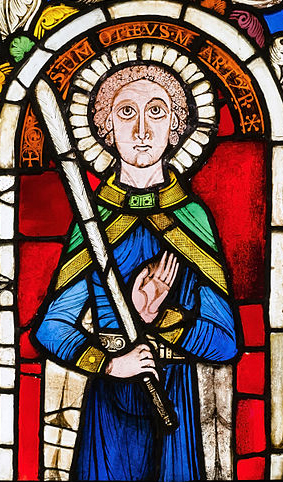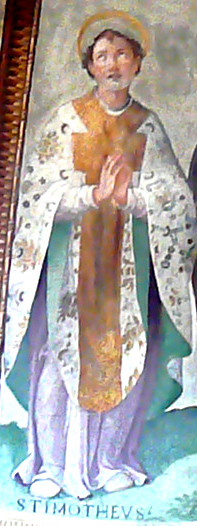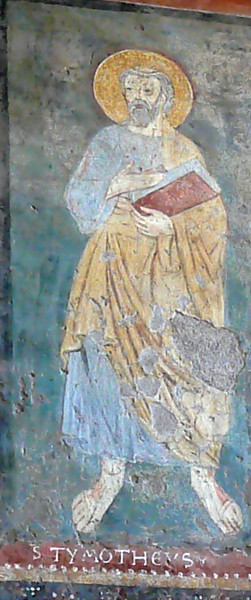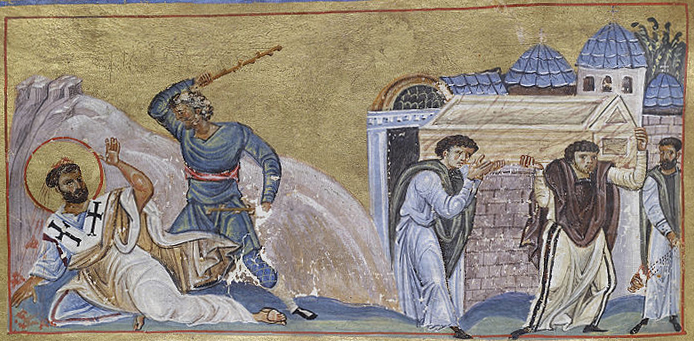Like the one on the right, many images of St. Timothy have him a beardless youth. St. Paul had called him "my beloved and faithful son in the Lord" in I Corinthians 4:17, took him on his journeys, and wrote the letters I and II Timothy to advise him about his leadership of the church in Ephesus. Paul never calls him a "bishop" or "presbyter," but some portraits nevertheless put him in a chasuble, the vestment worn by medieval priests at Mass, as in the second picture at right.
There is a secondary tradition which has Timothy martyred in Rome. The Golden Legend's very brief notice of the saint says he was tortured there during the reign of Nero. Quicklime was poured into his open wounds, but two angels directed his gaze to Heaven, where he saw Jesus offering him a golden crown.
A related tradition in Rome claims that Paul baptized Timothy in Rome in the home of the latter's father, St. Pudens. That home became a church dedicated to St. Pudentiana, who the tradition claims was Pudens' daughter and the sister of Timothy and two other Roman saints, Novatus and Praxedes. This story was related to us by a seminarian in the church, and is the basis for several paintings there. In one early fresco St. Paul baptizes and ordains Timothy. And in 1803 Bernardino Nocchi painted matching portraits of Timothy and Novatus.
The Roman traditions are not supported by anything in scripture or in the standard vitae by "Polycrates" and Simeon Metaphrastes, nor even the Roman Martyrology.1
The third picture at right is a fresco of "S. Tymotheus" in St. Paul Outside the Walls. Considering the beard, tonsure, and non-liturgical garb, this may be another St. Timothy, perhaps the one whose martyrdom in the 4th century is narrated in Golden Legend #52.
Prepared in 2015 by Richard Stracke, Emeritus Professor of English, Augusta University
Byzantine illumination, 11th century. See description page.
OTHER IMAGES

St. Timothy with the cudgel as his attribute – See description page

16th-century fresco – See description page

5th-century fresco – See description page
ATTRIBUTES
- Cudgel
- Episcopal garb
DATES
- Traditionally celebrated on January 24 in the Roman Calendar, changed to January 26 in 1969
- In the East, celebrated on January 22
ALSO SEE
BIOGRAPHY
- Golden Legend #121: St. Timothy of the 1st century.
- Golden Legend #52: St. Timothy of the 3rd/4th century (not in Caxton, see Ryan's translation or Graesse's Latin edition).
- Acts of Timothy.
- Roman Breviary: 1908 English translation, I, 712; 1632 Latin version, 806.
- Acta Sanctorum, January vol. 2, 562-69.
NOTES
1 Acta Sanctorum, January vol. 2, 562-69.
